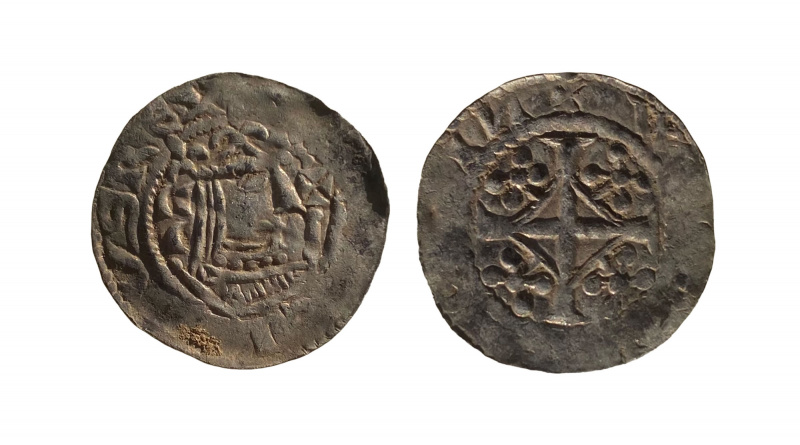Penny of William the Lion of Scotland
The finder of this truly remarkable hammered silver coin wished to remain anonymous. He said: “I realise that ‘unique’ is often used very loosely in reference to coins. I believe my metal detecting find does fit that category.”
The coin referred to measures 21mm in diameter but is shown greatly enlarged to highlight the detail. On the obverse, facing right, is a crowned bust with a sceptre in front; the head of the sceptre is in the form of a cross pattee instead of the more usual fleur de lis. The general style is unusual but really impressive and sharply struck. However, only three letters show up in the legend: VS REX.
Within the inner circle on the reverse is a cross pattee on a lozenge with concave sides and in each quarter is a quatrefoil with a pellet centre. All the central detail is sharp and clear but the legend is flat except for what appears to be IN (the letter N reversed) +W. IN is the end of the mint signature and the W is the first letter of the moneyer’s name.
The partial legend on the obverse points towards the letters VS being the end of the king’s name. I thought at first that it could be the end of STEPHANVS, which would add up to it being an English coin of Stephen. However, the differences were too major for it to belong to that reign. The only alternative was that the coin was Scottish and with that in mind I switched my research.
The coin is actually later than Stephen. It is a very early penny of William the Lion of Scotland (1165-1214), which was struck before 1174. It is a variety of number 5022 in Coins of Scotland, Ireland and the Islands. However, the carefully produced dies used to strike this coin are finer and different to the very few known coins of this type.
Valuation
The centres are very sharp but the surrounding edge mostly flat. This is likely to be the end result of the centre of the flan being thicker than the edge.
As it stands, what would this coin be worth? Well, even though we don’t know the moneyer or the mint at which it was struck the finder is correct in assuming it is presently a unique die pairing of an excessively rare type. Needless to say, this coin would be of great interest to specialists in the coinage of Scotland, so a likely pre-sale auction estimate would be no less than £4,000 to £5,000.
Valuation Service
If you would like your coin identified or valued, please read about my valuation service and contact me

